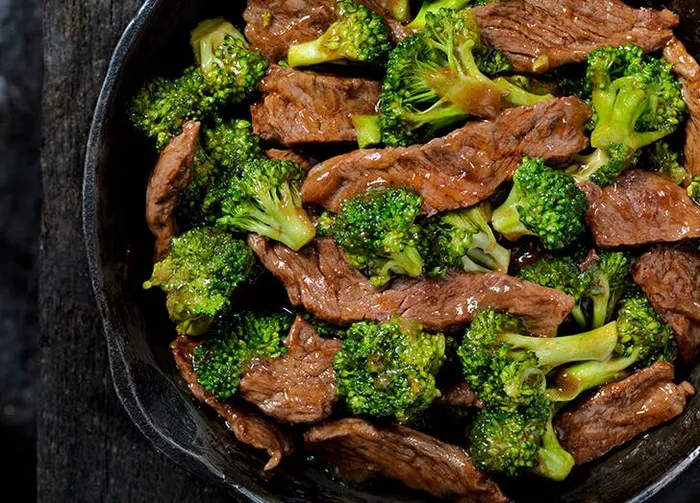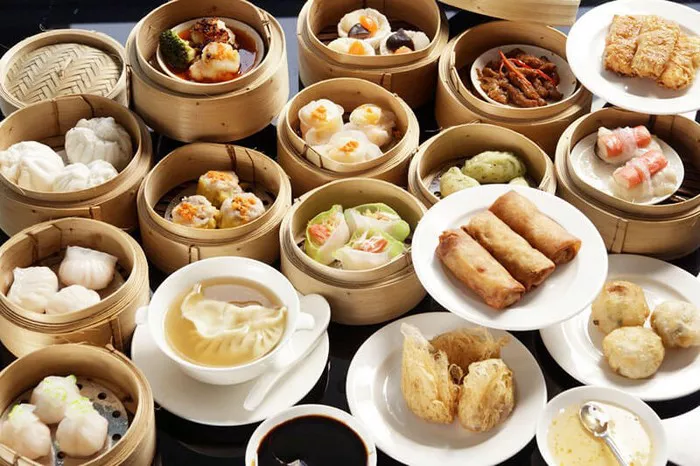Chinese cuisine is celebrated for its diverse flavors, intricate textures, and vibrant colors. For individuals living with diabetes, navigating the world of Chinese food can present some challenges due to the often high-carbohydrate and sugar content. However, with careful choices and an understanding of how different dishes are prepared, you can still enjoy the rich tapestry of Chinese flavors while managing your blood sugar levels. Let’s embark on a journey through the realm of diabetic-friendly Chinese food choices that prioritize health without compromising on taste.
1. Embrace Steamed Dumplings: Dim Sum Delights
Steamed dumplings, often found in dim sum menus, are a great diabetic-friendly option. Unlike their fried counterparts, steamed dumplings are lower in fat and calories. Opt for fillings that are lean and protein-rich, such as shrimp, chicken, or vegetable. These dumplings offer a delightful combination of flavors without causing significant spikes in blood sugar levels.
2. Choose Lean Protein: Poultry and Seafood
Diabetic-friendly Chinese food places emphasis on lean protein sources like poultry and seafood. Dishes featuring grilled or steamed chicken, turkey, or seafood are excellent choices. Look for dishes that are prepared without heavy sauces or breading, as these can contribute to excessive carbohydrate intake. Grilled fish or shrimp with vegetables, seasoned with herbs and spices, are perfect options for maintaining stable blood sugar levels.
3. Opt for Stir-Fried or Steamed Vegetables
Stir-fried or steamed vegetables are staples in Chinese cuisine and offer a colorful array of nutrients without significant carbohydrate content. Choose dishes that focus on a variety of non-starchy vegetables like broccoli, bok choy, snow peas, and bell peppers. These dishes not only add vibrant colors to your plate but also provide essential vitamins and minerals.
4. Delight in Tofu and Bean Curd Dishes
Tofu, a versatile soy-based protein, is a diabetic-friendly ingredient often found in Chinese dishes. Tofu and bean curd dishes are rich in protein and low in carbohydrates, making them suitable options for managing blood sugar levels. Dishes like ma po tofu or tofu with vegetables offer a balanced and flavorful choice that contributes to satiety.
5. Emphasize Brown Rice and Whole Grains
Chinese cuisine frequently incorporates rice as a staple, and for individuals with diabetes, choosing brown rice or whole grains is a healthier alternative to white rice. Brown rice has a lower glycemic index and higher fiber content, which helps slow down the digestion and absorption of carbohydrates, preventing rapid spikes in blood sugar levels.
6. Savor Clear Soups and Broths
Clear soups and broths are not only comforting but also diabetic-friendly options in Chinese cuisine. Hot and sour soup, for instance, contains protein-rich ingredients like tofu and vegetables in a flavorful broth. These soups offer a warm and nourishing experience while keeping carbohydrate intake in check.
7. Portion Control: Share Dishes
When dining out at Chinese restaurants, consider sharing dishes with friends or family. This practice not only allows you to sample a variety of flavors but also helps control portion sizes. Many Chinese dishes are designed to be shared, making it easier to enjoy a balanced meal without overindulging in high-carbohydrate options.
8. Opt for Light Sauces and Dressings
The choice of sauces and dressings can significantly impact the carbohydrate and sugar content of your meal. Opt for light sauces that are not overly sweet or heavy. Dishes with garlic sauce, ginger sauce, or a light soy-based glaze can provide flavor without causing rapid blood sugar spikes.
9. Balance Sweet and Sour Flavors
Chinese cuisine is known for its balance of sweet and sour flavors. When selecting dishes, aim for those that achieve this balance naturally, without excessive use of added sugars. Sweet and sour dishes made with lean protein and a variety of vegetables can provide a satisfying blend of tastes without compromising your dietary goals.
10. Choose Plain Noodles and Rice
When noodles and rice are on the menu, opt for plain versions like steamed white rice or plain noodles. These options have fewer added ingredients and are less likely to cause sharp increases in blood sugar levels. Additionally, controlling portion sizes when consuming these carbohydrate-rich foods is key to managing blood sugar effectively.
11. Mindful Selection of Appetizers
Appetizers are often a highlight of Chinese meals, and there are diabetic-friendly choices to explore. Cold appetizers like seaweed salad, cucumber salad, or marinated vegetables provide refreshing and low-carbohydrate options that stimulate the palate without compromising your health goals.
12. Balance Flavors with Vinegar and Spices
Chinese cuisine is rich in a variety of flavors, from savory to tangy. Vinegar and spices are used to enhance the taste of dishes without relying heavily on sugar or salt. Dishes like cucumber salad with vinegar, for example, offer a refreshing burst of flavor that aligns well with a diabetic-friendly diet.
13. Be Mindful of Fried Foods
While it’s important to be cautious with fried foods due to their potential to increase blood sugar levels, there are ways to enjoy them in moderation. Opt for dishes that are lightly fried, and consider sharing these with others to control portion sizes. Sesame chicken, when consumed in moderation and paired with vegetables, can be a flavorful treat.
14. Consider DIY Stir-Fries
Some restaurants offer the option of creating your own stir-fry by selecting ingredients and sauces. This allows you to have control over the components of your meal and choose diabetic-friendly options like lean protein, non-starchy vegetables, and light sauces. It’s a personalized approach that aligns with your dietary preferences.
15. Hydration and Herbal Teas
Chinese cuisine often offers a variety of herbal teas that can be a soothing way to end your meal. Consider choosing unsweetened herbal teas, which not only provide hydration but also offer potential health benefits. Chrysanthemum tea and green tea are popular choices that can complement your dining experience.
Conclusion
Navigating Chinese cuisine while managing diabetes requires an informed approach that focuses on making mindful and health-conscious choices. By embracing lean proteins, non-starchy vegetables, whole grains, and light sauces, you can savor the diverse flavors of Chinese cuisine without compromising your health goals. With careful consideration and a willingness to explore different dishes, you can enjoy the pleasures of dining while nurturing your well-being. Remember that moderation and portion control play key roles in maintaining stable blood sugar levels, allowing you to savor each bite with confidence.























